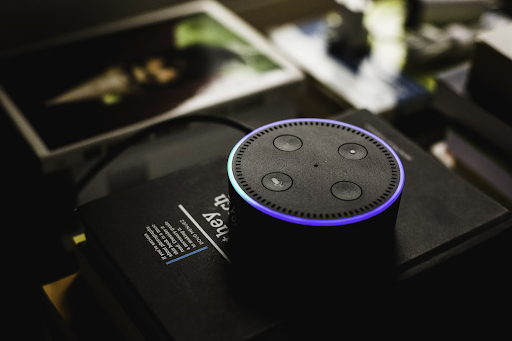8 Common Mistakes to Avoid in Online Voice Search Optimization for Your Website

Are you implementing voice search optimization for your business? There’s a high chance you’re committing significant mistakes affecting your overall strategy. In this article, we’ll look at those common errors and how you can address them.
Let’s dive deeper into this strategy and see how to maximize it.
Understanding Voice Search Optimization
Voice search optimization is optimizing your website to appear on voice searches made through a device. These often work through a voice assistant like Siri, Amazon Alexa, or Google’s Search by Voice. While there are some overlaps with traditional SEO, there are some significant differences that you can’t ignore (more on that later). Hence, it’s a strategy more businesses should pay attention to.
The way people get information has changed significantly in the past few decades. Once upon a time, we needed to spend hours in a library, searching for resources and going through two-inch books to find the answer to a handful of questions. Then came search engines, which revolutionized the ways we learn and inquire.
Why Businesses Need Voice Search Optimization
Why should businesses optimize for voice search? Here are some compelling reasons:
Growing User Base
Today, voice search has brought that even further. And if your business isn’t putting effort into voice search optimization, you could be missing out. There are over 125.2 million voice search users in 2024. That’s a small fraction of the 5.06 billion traditional search users, but it’s still big enough.
Lower Competition
More importantly, fewer businesses are trying to rank on voice, which makes your competition much lower in this space. So, if you’re looking for a low-competition channel, voice search is most likely one of your best bets.
Ecommerce Opportunity
Voice search does more than build awareness for your business. A considerable part of voice searches have a commercial intent. That simply means people use voice assistants to spend money. That figure is around $2 billion, according to recent studies. Likely, that figure will only grow through time.
Differences Between Traditional Search and Voice Search
So, how are traditional and voice searches different from one another? Apart from the search experience— with voice search mainly using voice command over typed queries— there are three other differences every business with a website should note:
- Longer and more conversational keywords. You’ll have longer tail keywords formed in complete sentences.
- Prioritizes local listings. Local businesses and options are the top options on voice search.
- Results are prompt and to the point. The average voice search result is 29 words and users don’t usually get several options if they don’t ask for it specifically.
Top 8 Voice Search Optimization Mistakes
If you’re optimizing your business website for voice search, you should avoid these mistakes to get the best results possible:
Mistake #1: Ignoring Long-Tail Keywords
Voice searches have an element of specificity to them. Because it’s easier to give a longer command on voice, people tend to do that. So, your search keywords should target more long-tail options.
For example, don’t target “kitchen knives” if you sell them on your website. Try to go for longer tail keywords like:
- best kitchen knives for home chefs
- high-quality stainless steel kitchen knives
- professional chef knives set with a case
- Japanese Damascus steel kitchen knives
- ergonomic kitchen knives for arthritis sufferers
- affordable chef knives for beginners
- top-rated kitchen knife sets under $200
- carbon steel kitchen knives for slicing meat
- lightweight kitchen knives for precise cutting
- kitchen knife sharpening stone kit
Mistake #2: Not Optimizing for Local Searches
Commercial searches on voice assistants often prioritize local listings above national ones. That’s because they’re designed to provide the user with immediate results. So, you should probably craft your website content to target local searches by mentioning the regions you serve and your base of operations.
Ignoring local keywords is one of the most common mistakes in voice search optimization; it can significantly affect search results for location-sensitive searches. For instance, someone searching for “online nursing programs” using voice search will probably be shown choices nearest their area. Ensuring your material is optimized for local keywords can help you grab these searches and boost awareness.
Including local references in your material helps universities provide online nursing programs to locate pertinent information readily, increasing the accessibility of your products to a larger audience.
This delivers a wealth of opportunity for companies that want to target specific locations, even if their offerings have a remote aspect.
Mistake #3: Overlooking Website Loading Speed
Even with voice search, website loading speeds are crucial to your searchability. Voice search assistants expect fast websites still. Sometimes, it might even skip your site if it loads too slowly.
And if your site does pass the voice search’s threshold, there’s a high chance that user will want to click through your site if their voice assistant recommends it. You won't get that much traffic if your site doesn’t pass that test.
Mistake #5: Neglecting Mobile Optimization
Most search queries are broken phrases or bundles of keywords that sound off. Consider how one might type “mortgage rates in Los Angeles” or even “mortgage rates LA.”
With voice search, you have a different form of query from users. Most voice searchers will say their queries out loud in complete sentence form. So, based on the above example, someone will search for mortgages in Los Angeles by saying something like, “What are the current mortgage rates in Los Angeles today?” to their voice assistant. Otherwise, the assistant might not even understand the query.
That said, you should optimize your website for these longer tail keywords. Target question-based searches by adding expansive, frequently asked questions to your website.

Mistake #6: Ignoring Featured Snippets and Direct Answers
Featured snippets and direct answers get a lot of organic traffic on traditional searches. They also get a lot of traction for voice. Voice virtual assistants often use short answers from featured snippets.
To appear on snippets, it’s best to use “what is” headings in your content and then add definitions no longer than three sentences. Check the format of the featured snippet of the query you’re targeting and match your content and format to that.
Mistake #7: Not Utilizing Structured Data
Your structured data makes it much easier for search engines to understand and adequately categorize your content. Website owners should add schema markup to their websites to fulfill this best practice.
Only add the schema that’s most appropriate for your website. For e-commerce, that includes a product, breadcrumb, and person/organization schema. You’ll need an article, breadcrumb, and person/organization schema for blogs or news sites.
Mistake #8: Lack of Continuous Testing and Optimization
Like Google and many social media channels, algorithms change for voice search. You must stay on top of these changes as they significantly affect your voice search visibility and performance. Don’t think that you’ll stay on top forever if you don’t make the necessary changes. The rule of thumb is always to update content when it’s no longer helpful.
Conclusion
Voice search provides many opportunities to get traffic and leads to your website. But it won’t happen overnight and the traffic won’t come effortlessly. You’ll need to take a proactive and strategic approach to voice search optimization.
Follow the best practices and avoid the mistakes mentioned above, and you should be off to a good start. Voice search optimization might not be effortless, but it’s worth the time and resources. So, don’t sleep on voice search. It’ll continue to rally upwards. Getting in the game early is the best way to maximize the trajectory.
Copyright © . All Rights Reserved